Giant millipedes
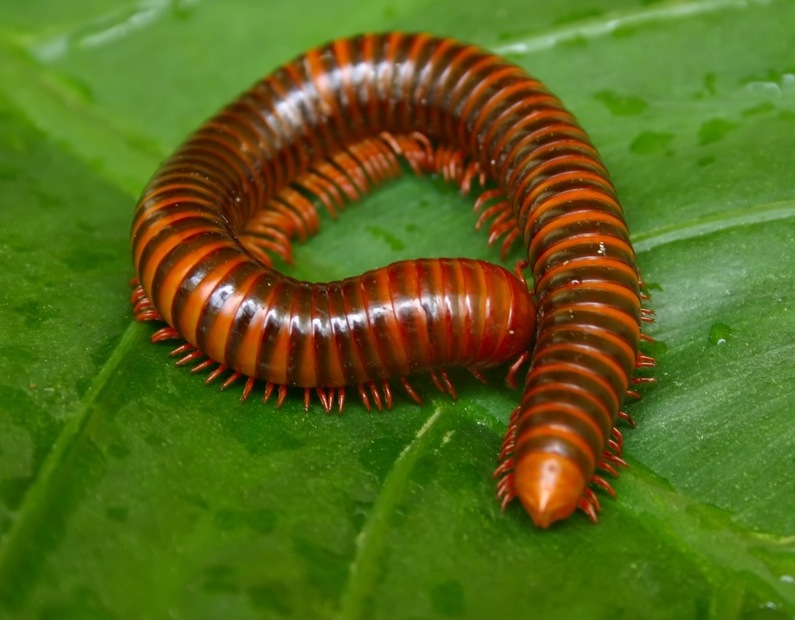
Ask anyone what they know about millipedes, and the answer is likely to be they have 1000 legs. But this isn't exactly true. There are over 10,000 different species of millipede known to science, but not one of them actually has 1000 legs!

In fact, most millipedes only have 400 legs or less, with some having little more than 30 in total. The record number is held by a Californian species called Illacme plenipes, which can have up to 750 legs, although it only grows to about 2.5cm (1in) long. The reason that there is so much variance in the leg counts of millipedes is related to the way that they grow. As the number of body segments increase, so does their leg count.
Oldest land-dwelling species
Millipedes are the oldest of all known land creatures. A single specimen, which lived 428 million years ago, and grew to just 1cm (0.4in) was discovered in 2004 by amateur fossil-hunter Mike Newman, at Cowie Harbour, Stonehaven, in Aberdeenshire, Scotland. It was christened Pneumodesmus newmani, with its generic name commemorating the fact that Stonehaven was the birthplace of the inventor of the pneumatic tyre. This also linked in with the fact that the millipede breathed in air through openings on the sides of its body called spiracles.
Types of millipede
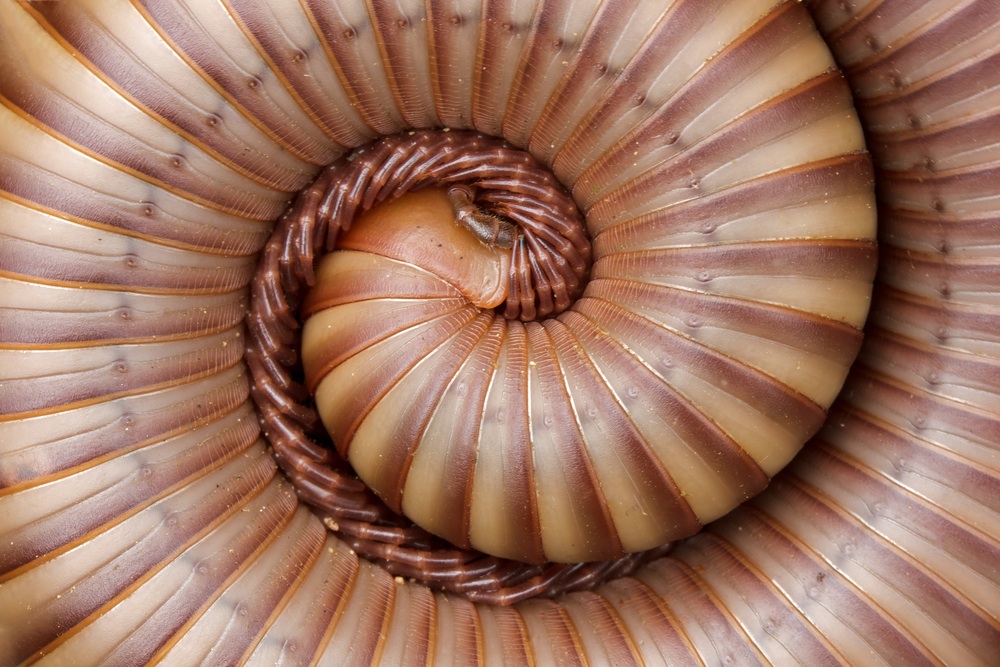
Millipedes generally have fairly long, elongated bodies, with two pairs of legs for each segment of the body, although the segment immediately behind the rounded head has no legs. In spite of their apparent mobility, millipedes are slow-moving creatures, and spend much of their time curled up and hiding away. Nevertheless, they can make interesting vivarium occupants, with the larger species being most widely-kept.
The giant train millipede (Archispirostreptus gigas) is the biggest of all, attaining a length of about 28cm (11in). It is widely-distributed in tropical parts of Africa, where it is locally known as the chongololo, and inhabits forests. Like many millipedes, it is dark in colour and has a blackish-brown body.
There are more colourful species though, such as the pink-footed millipede from Tanzania with its pink legs and head, while the red-banded from Ghana actually has red bands around its body too. It occurs in damp areas and feeds on rotting vegetation like other millipedes. These invertebrates are nocturnal by nature, emerging under cover of darkness.
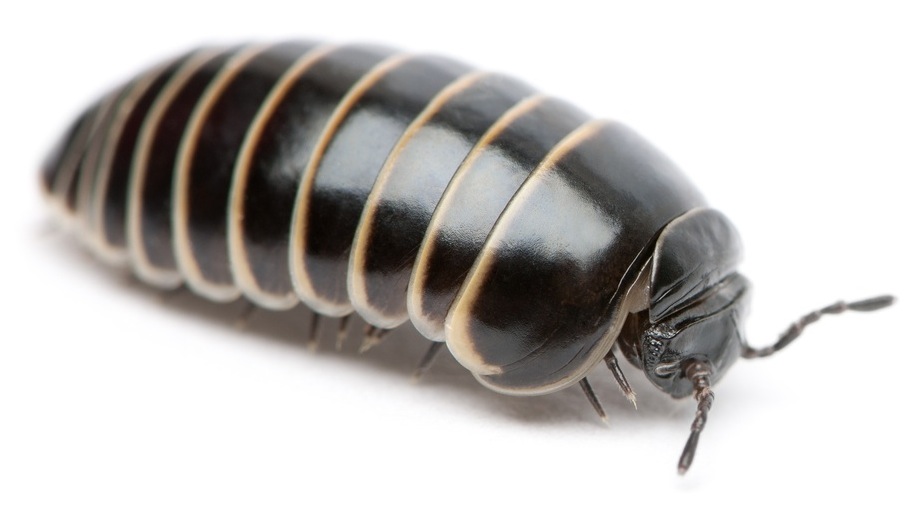
Pill millipedes are unusual in that they have short bodies, comprised of as few as 11 segments, appearing rather like woodlice as they can curl up into a ball. Three species are native to the British Isles, although the group is widely-distributed through the world, with African species often being available. Their care is similar to that of their larger relatives.
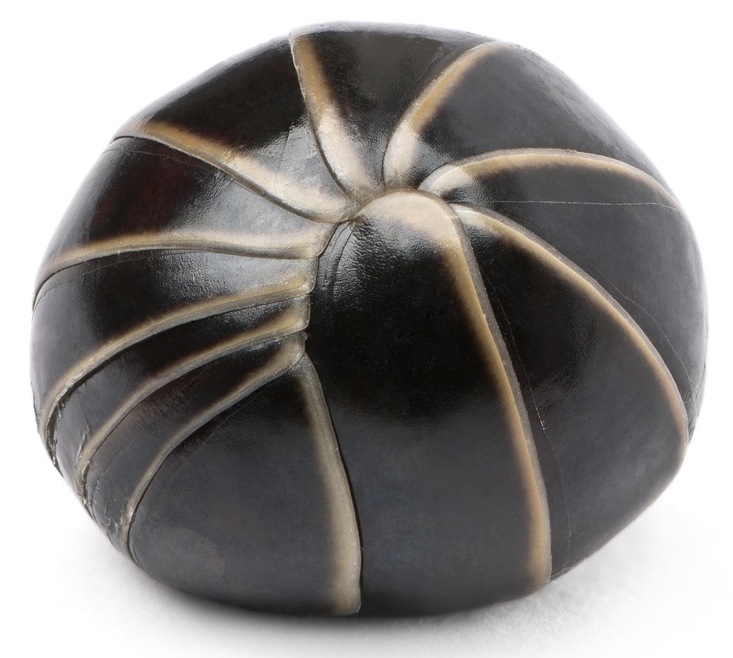
Purchasing
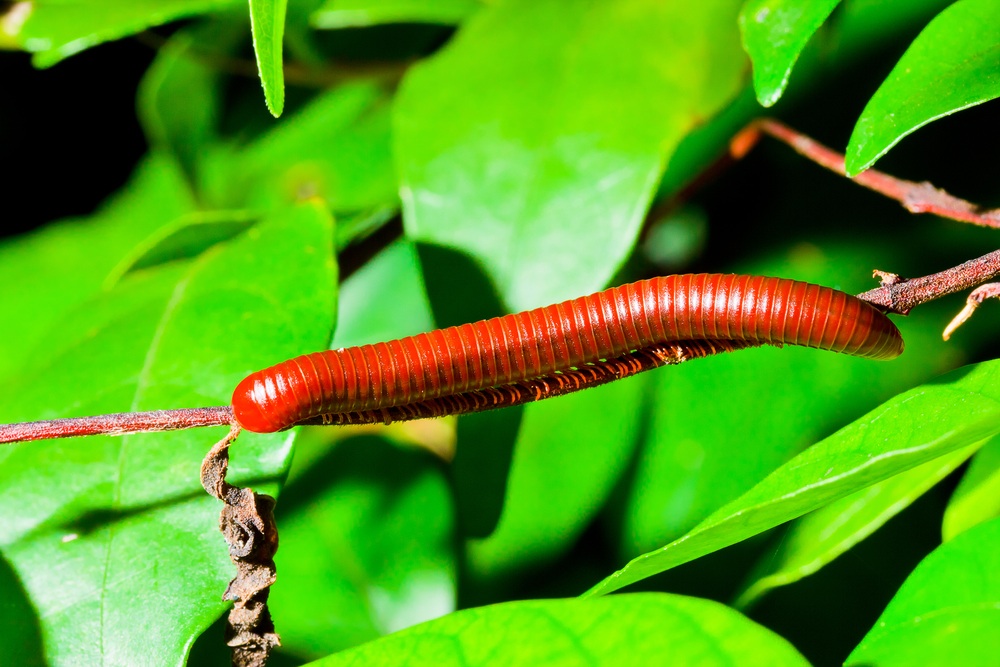
Always buy a pair together at the same time. (See below for sexing details). Otherwise, it may well be very difficult if not impossible to find a suitable mate for your pet in the future, with many millipedes not yet formally identified and lacking scientific names.
Disease issues are not a serious problem with these invertebrates, but when it comes to choosing stock, look for individuals that are relatively lively, as this is generally a sign of good health. Sometimes, you may notice tiny mites living on the millipede's body. They will not harm the millipedes though, but just share their food.
Housing and care
Keeping these millipedes is quite straightforward, requiring a large size, tall acrylic container with a hood. The size of the enclosure obviously needs to be large enough for the millipede to move around freely when its body is fully uncoiled.
Gentle heating is required, and a heating mat with a mat-stat is ideal to maintain the temperature at a maximum figure of 24°C (75°F). The heating mat should only cover about half of the floor area of the enclosure, creating a thermal gradient so the millipede can move to a cooler locality if it chooses. Lighting is not necessary, and in fact, will only cause the millipede to remain hidden.
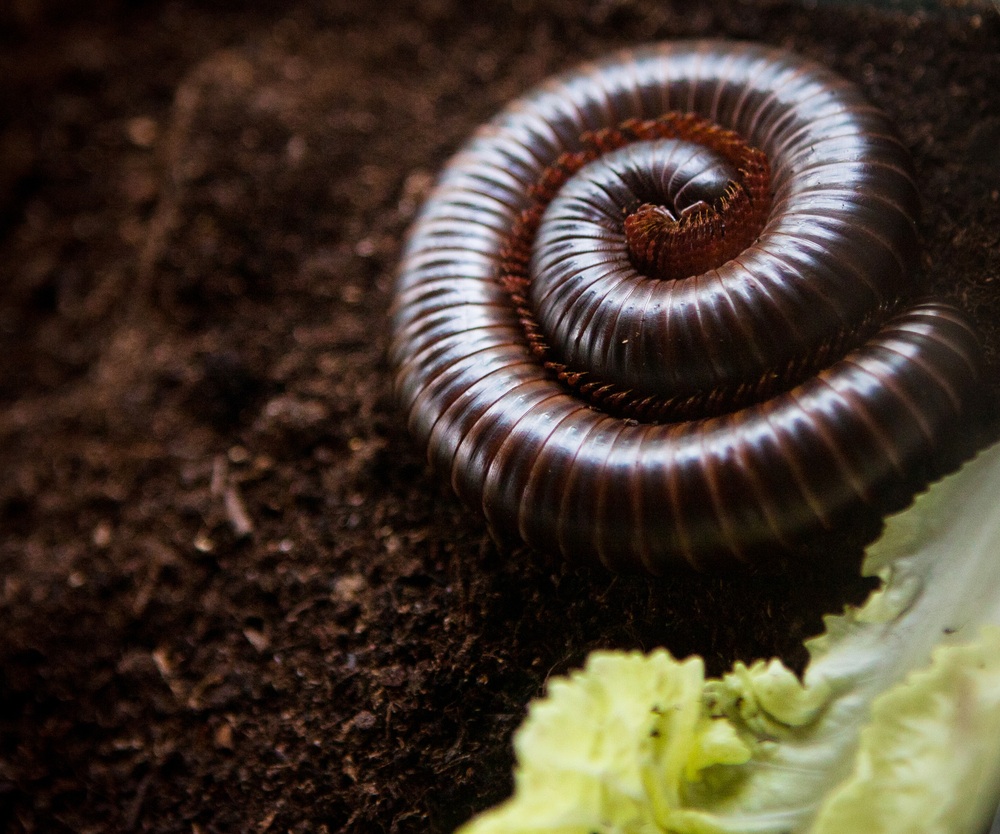
A variety of soil-type materials can be used as a substrate in the enclosure, but avoid any which contain fertilizer, as this could poison your pet. A peat substitute mixed with some orchid bark works well though. The substrate should be about 12.5cm (5in) in depth, with some millipedes preferring to burrow, but provide surface retreats too, such as cork bark and damp sphagnum moss, under which these invertebrates can hide away. Some will also climb occasionally.
Be certain to ensure the surface is kept moist at all times, although do not allow the substrate to become saturated with standing water. A plant sprayer will be useful for this purpose, and use dechlorinated water. Place a shallow plant saucer of water in the substrate too, so the millipede can bathe if required, adding some gravel here to ensure there will be no risk of your pet drowning.
Feeding is very straightforward. Millipedes are often described as detrivores, because they feed on rotting vegetable matter, and they will eat a variety of ripe fruit such as banana as well as greenstuff, which should be sprinkled with a vitamin and mineral supplement.
Handling

Try to avoid this if possible, because although they are quite different from centipedes which can bite, millipedes do have defensive mechanisms of their own, which means that it is safest to handle them wearing thin, disposable gloves. This is because they produce an irritating liquid, which may also stain your hands. You also need to be careful that your millipedes does not fall to the floor. When picking it up, always scoop it up from beneath, and do not be surprised if it curls up for a time.
Breeding
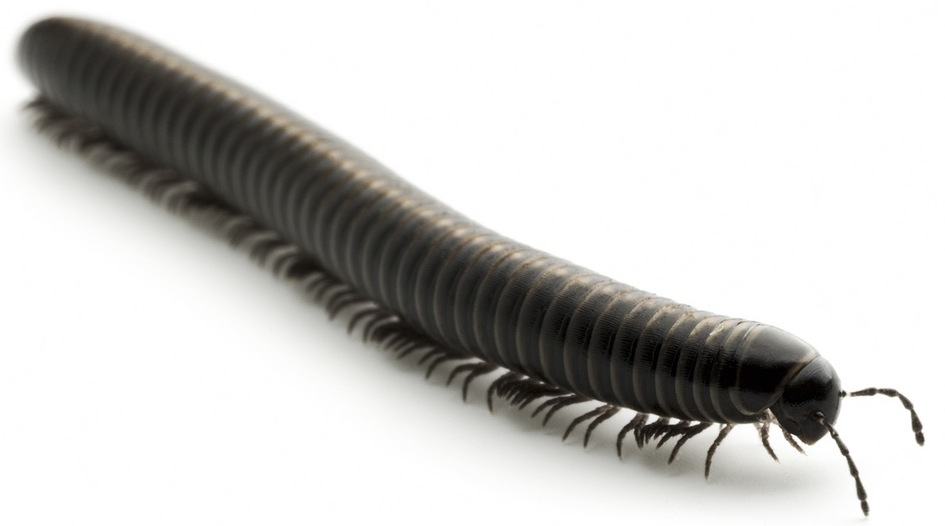
Sexing these invertebrates is possible, and often the easiest way to do this is to transfer them to a clean plastic container. Look closely from beneath at the head end of the millipede, and count back to the seventh segment. If the legs here appear missing, then you have a male. These particular legs have been modified into a pair of claspers, which are not used for walking purposes.
Courtship entails the male vibrating his legs to attract the female, so they lie down together and vibrate their legs. A receptive female will then lift her body, and the pair entwine, with the male clasping her as a prelude to mating.
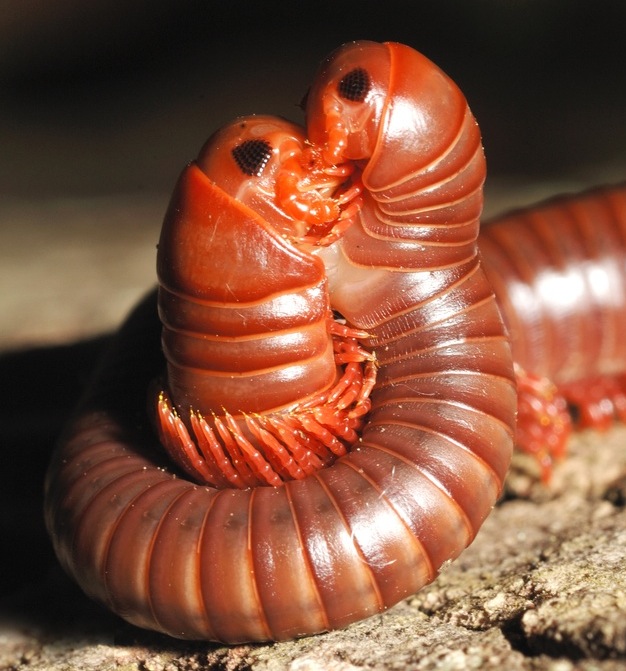
All millipedes lay eggs, which are buried in the substrate, and in some cases, the female may actually stay in the proximity of the eggs, guarding them until they hatch a few weeks later. The young are tiny at this stage when they emerge from the eggs, but then grow quite quickly.
At first, there is only one pair of legs rather than two on each segment of the body, but as they moult and develop additional segments, so they start to develop their more usual pattern of growth. They will remain pale in colour for some months, becoming mature at between one and two years of age. Avoid disturbing them when they are moulting as their bodies are soft and very susceptible to injury.
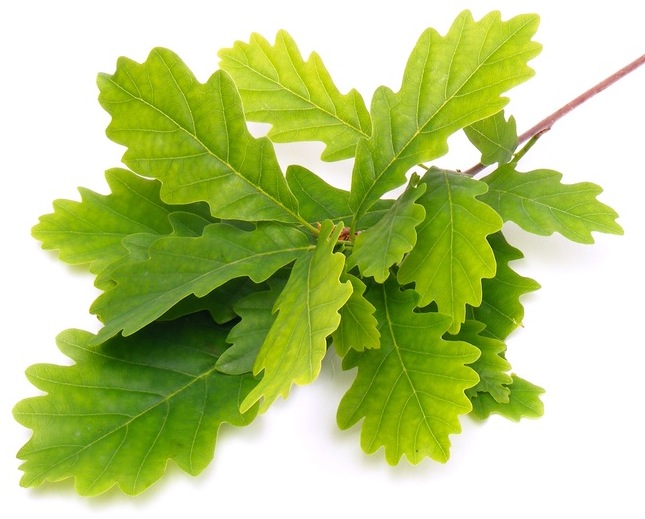
Oak leaves are a very useful addition to the diet, particularly for rearing purposes, as they provide a source of chitin which forms the hard outer casing of these invertebrates.
Millipedes are surprisingly long-lived creatures, and it is possible for them to live for as long as a decade. There have been some reports of Vietnamese rainbow millipedes (Aulacobolus rubropunctatus) dying soon after breeding though.